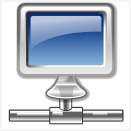
First, the great news. I found out last week that I’ve been accepted into a one-year Masters program at the University of Chicago. I’ll be seeking my degree in Political Theory at the school where so many great minds have gone before me. I’m honored to follow their footsteps.
Now, the rest of the story. InsanelyMac, along with the OSx86 Project wiki and OnMac.net, is for sale.
Over the course of many sleepless nights, I’ve come to the realize that the schedule required by such a program won’t allow me to devote the time required to see InsanelyMac grow into the future. It’s been a struggle to do so over the past year, and all indications would point to a school load that’s 3-4x what I’m currently carrying at the end of my Senior year. A community such as this needs a strong leader who will do whatever is necessary to fight for the continued strength of that community. I have served in that capacity as I was able, but fate now takes me on a much different path.
I thought I’d try to answer a few of the questions that I’ve received over the past few days in discussing the matter with the staff:
What will you be selling?
Simply the things for which I have paid from my own pocket – the server, the domains, the site design and databases, etc.
Who will you sell it to?
This is an important point – I will only sell to a buyer who is willing to “carry the torch” and continue to serve InsanelyMac in a manner that we would want. I will not sell to anyone – regardless of money – who does not have the best interests of the community in mind. You can count on that.
Will you leave?
No, not at all. I’ll be around for as long as InsanelyMac is here (forever?), although my schedule for the foreseeable future won’t allow the amount of involvement I’d like. I’ll also be here to help with the transition to new ownership.
Will the staff leave?
The staff has agreed to stay on through the transition as well. As always, they’re free to leave whenever they’d like. Real life often comes calling when we least expect (or want) it.
Why sell?
Ideally I’d just be able to hand the forum over one of the other Administrators of the site, but cmoski, the other remaining Admin, wants to spend his time with IRC-related pursuits. I could give it over to a group who wanted to manage it, but 2 years of running this place have taught me that rule by committee rarely works well.
Eventually I came to the conclusion that selling the site would be the best idea. It would give a new owner a stake in its success… and it ensures that he is committed to seeing it forward (or else he wouldn’t spend the money to buy it). It’s a little bit of insurance that my successor will be accountable to both himself and the community, which is exactly how a forum like this should run.
Where's the auction?
The SitePoint auction can be found here. Obviously, I'll give preference in bidding to InsanelyMac community members, even if they are not the highest bid.
Although I'll still be around in the months to come, let me say this: it's been one wild ride with all of you, and I thank you for all the times we've shared so far. I consider you my friends... and that's one that won't change, regardless of who owns the rights to the site.
- Read more...
- 148 comments
- 29,212 views






